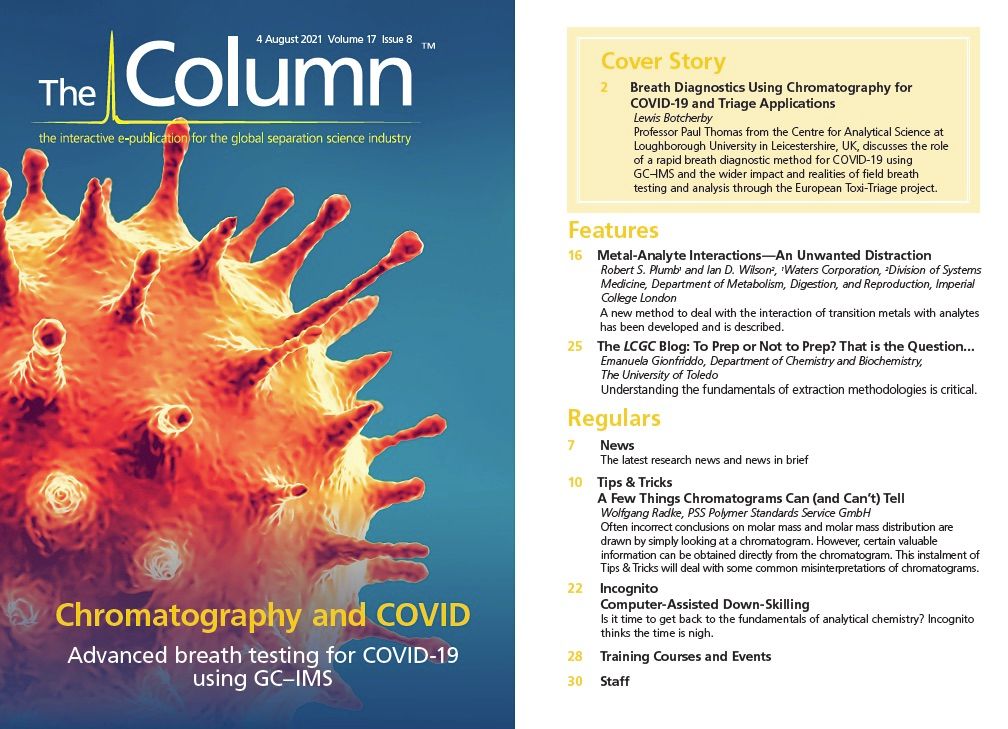Identifying Illegal Dyes in Red Spices Using UHPLC–MS/MS
Researchers from the University of Barcelona in Barcelona, Spain, have developed an ultrahigh-performance liquid chromatography tandem mass spectrometry (UHPLC–MS/MS) method to determine eight banned dyes in turmeric, curry, and chili products (1).
The use of dyes to improve the aesthetic qualities of food is a common practice in food industries, however, certain types of dyes have been banned because they have been deemed unsafe for human consumption. Dyes such as Sudan I-IV, Sudan Orange, Sudan Red 7B, Para Red, and Rhodamine B have been banned in many countries because they have been linked to genotoxic and carcinogenic properties. However, not all countries have implemented such regulations and the monitoring of imported food products for such compounds is therefore of great importance, requiring new sensitive methods.
In this study, the feasibility of electrospray ionization (ESI), atmospheric-pressure chemical ionization (APCI), and atmospheric pressure photoionization (APPI) for the ionization of the dye compounds was evaluated. The tandem mass spectrometry (MS/MS) fragmentation of dye compounds was evaluated and used to establish fragmentation pathways and common fragmentation behaviours, with the most significant, characteristic, and abundant product ions being selected for a UHPLC–MS/MS method targeting those compounds from the spice samples.
The study identified that out of the three atmospheric pressure ionization sources APCI performed the best, with matrix effect (ME) values ranging from 2 to 25%. Furthermore, the proposed method performed well, providing low method limits of detection (MLODs) (1–48 μg kg−1), good intra-day precision (RSD % < 15%), and accurate quantitation (relative error % < 15%).
Researchers went on to demonstrate the applicability of the method through the analysis of turmeric, curry, and chili product, with the results showing that the method was able to detect the compounds in the low μg kg−1 range.
Reference
- A. Arrizabalaga-Larrañaga et al., Anal. Chim. Acta 1164, 338519 (2021).

Accelerating Monoclonal Antibody Quality Control: The Role of LC–MS in Upstream Bioprocessing
This study highlights the promising potential of LC–MS as a powerful tool for mAb quality control within the context of upstream processing.
Using GC-MS to Measure Improvement Efforts to TNT-Contaminated Soil
April 29th 2025Researchers developing a plant microbial consortium that can repair in-situ high concentration TNT (1434 mg/kg) contaminated soil, as well as overcome the limitations of previous studies that only focused on simulated pollution, used untargeted metabolone gas chromatography-mass spectrometry (GC-MS) to measure their success.
Prioritizing Non-Target Screening in LC–HRMS Environmental Sample Analysis
April 28th 2025When analyzing samples using liquid chromatography–high-resolution mass spectrometry, there are various ways the processes can be improved. Researchers created new methods for prioritizing these strategies.
Potential Obstacles in Chromatographic Analyses Distinguishing Marijuana from Hemp
April 28th 2025LCGC International's April series for National Cannabis Awareness Month concludes with a discussion with Walter B. Wilson from the National Institute of Standard and Technology’s (NIST’s) Chemical Sciences Division regarding recent research his team conducted investigating chromatographic interferences that can potentially inflate the levels of Δ9-THC in Cannabis sativa plant samples, and possible solutions to avoid this problem.

.png&w=3840&q=75)

.png&w=3840&q=75)



.png&w=3840&q=75)



.png&w=3840&q=75)













